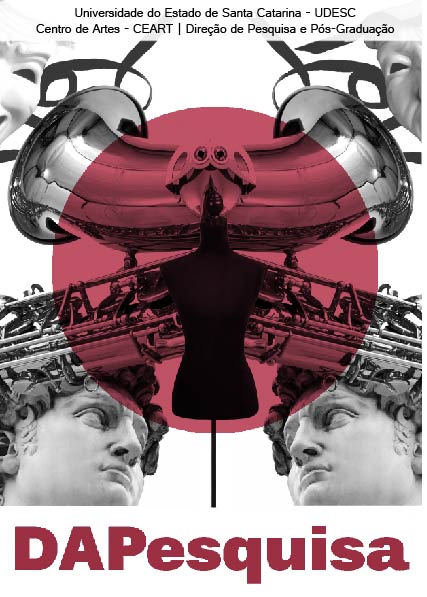Palavras livres, pesadas, suculentas: Das Três riches heures aos livros de artista
DOI:
https://doi.org/10.5965/1808312910132015046Abstract
O artigo propõe uma reflexão sobre o livro, abordando sua dimensão espaço-temporal e a relação de fertilidade entre palavra e imagem. Partindo do livro de horas medieval, reflito sobre o significado do livro e seu alcance na época para, em seguida, dedicar-me às proposições do século XX que repensam sua estrutura e sentidos múltiplos. Evoco as reflexões de Ulises Carrión sobre a arte de fazer livros, bem como uma breve genealogia da Poesia Concreta. A prática medieval traz uma dimensão ritual que pode ser comparada à feitura dos livros de artista. Para concluir a reflexão sobre as bordas entre palavra e imagem, trago um trabalho de Dario Robleto que parte da grafia como vazio preenchido, redimensionando as tensões entre palavra e obra de arte. Tanto poetas quanto artistas visuais, portanto, ousaram e ousam atravessamentos no espaço da página, gerando interessantes tensões entre grafia e signo, imagem e significado.Downloads
Downloads
Published
How to Cite
Issue
Section
License
Copyright (c) 2015 Telma Scherer

This work is licensed under a Creative Commons Attribution 4.0 International License.
Authors who publish in this journal agree to the following terms:
The authors retain the copyright and grant the journal the right of first publication, with the study being simultaneously licensed under the Creative Commons Attribution-Noncommercial License, which allows the sharing of work with acknowledgment of authorship and initial publication in this journal.
This journal, following the recommendations of the Open Access movement, provides public access to all its content, following the principle that free access to research leads to a greater global exchange of knowledge.
Plagiarism in all its forms constitutes unethical publication behavior and is unacceptable. The Journal DAPesquisa reserves the right to use software or other methods of detecting plagiarism to analyze submitted works.





